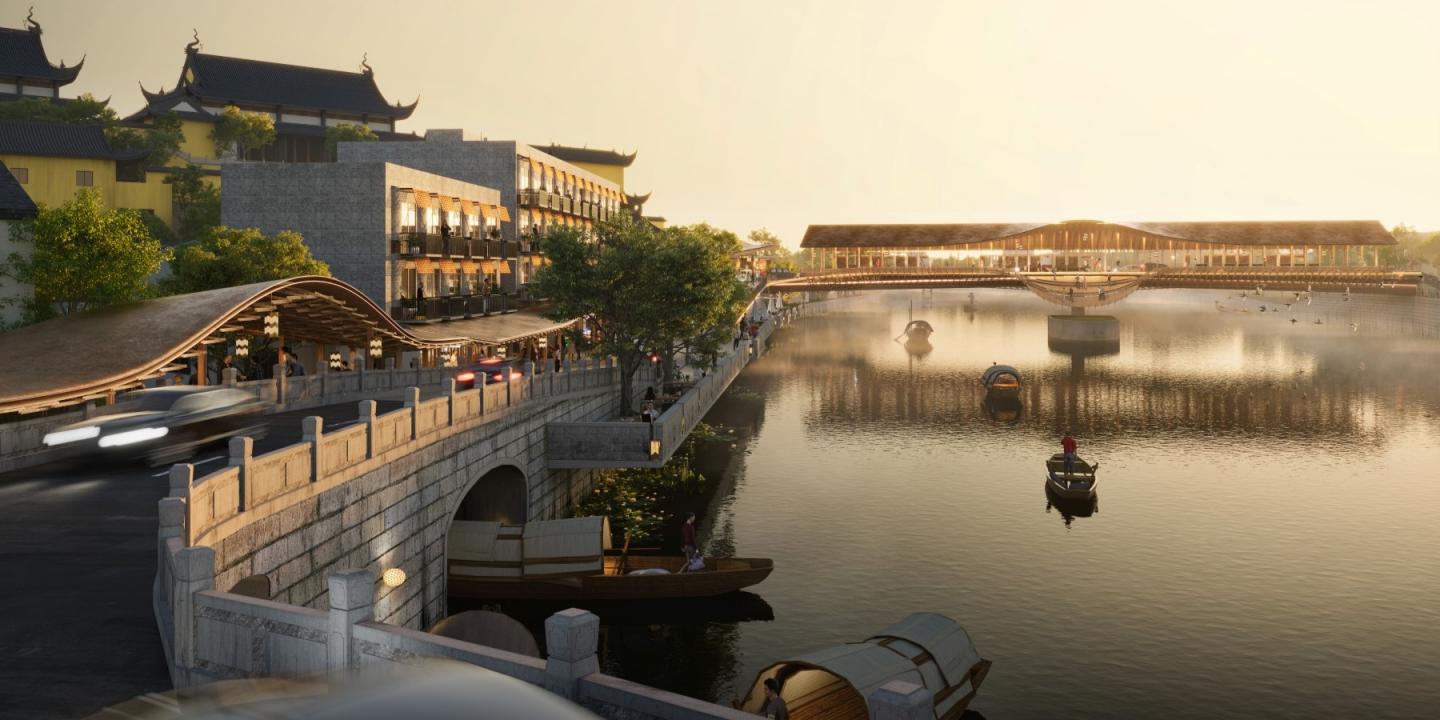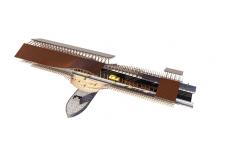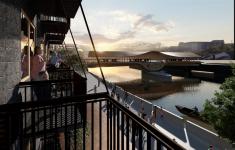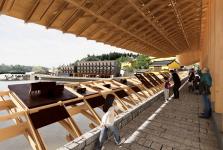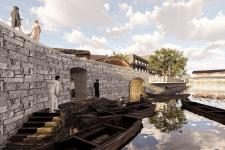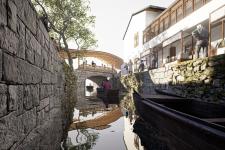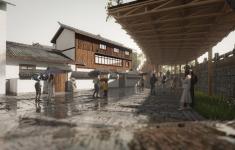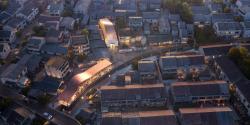Project Background
The project is located in Douwang Ancient Town, in the northern part of Shaoxing City, Zhejiang Province. It is the last remaining old street from Shaoxing's Jiangnan water town that has been preserved amidst the city's modernization efforts. Furthermore, it is the only one of the four ancient towns in Shaoxing that has yet to be developed.
Doumen Ancient Town was established during the Tang and Song Dynasties and was once the most prosperous area of Shaoxing, second only to the city center. The town stretches about 1.5 kilometers and integrates mountains, water, and streets. To this day, it still retains its original, ancient charm with features such as stone-paved roads, two-story houses, opposite-facing shops, old bridges, and traditional residential buildings.
Today, Doumen Ancient Town has lost its vitality due to the shift of the city center. The hollowed-out old streets are filled with the sighs of empty-nest elderly residents, and the connections between people are precariously fading in this space that has lost its energy.
Design Concept
The project design responds to the local needs and explores a differentiated development path for Doumen Ancient Town. Unlike the traditional development model of placing commercial establishments along both sides of the old streets, the design proposes an innovative strategy of "preserving the traditional old street axis while introducing revitalized commercial services externally." This approach creates a spatial layout of "three gates and one axis."
The street and alley axis connects the three main entrances, forming a complete visitor circulation route. This approach not only preserves the original ecological scenes and prevents the hollowing-out of the area but also enhances the quality of life for residents and offers visitors a truly immersive cultural experience.
Center business gate:Activate | Connect
Doumen Bridge stands as a prominent symbol of local culture, and the project uses modern design techniques to reinterpret the traditional "corridor-building-corridor" imagery. It integrates the Chinese philosophy of "governance through openness" (以疏代堵), a key principle in water management, into the bridge and site design. This approach echoes the historical significance of the Doumen Sluice in water control.
The corridor structure uses modern timber construction, with a meticulously crafted design that aims to replicate the complexity and beauty of traditional Chinese architecture, creating a unified, continuous, and intricately woven facade.
A pedestrian auxiliary bridge is added to alleviate the traffic pressure brought by tourism development. The design creates a rich, engaging, and dynamic three-dimensional scene and circulation flow.
Traffic Transition Gate: Conjunction | Transition
The overall traffic flow is reimagined by paving the ground to seamlessly integrate the commercial square with the pedestrian street. This approach meets the needs of commercial development while preserving the original character of the ancient town, allowing it to develop naturally.
The original "upper residences, lower shops" commercial layout of the ancient town is retained, with optimizations made to the facades of the commercial buildings along the street.
The roads are widened, and the residents' bus stops are preserved and optimized. Additionally, a shuttle bus route is planned for better connectivity.
The tradition of traveling by rowboat remains deeply ingrained in this century-old waterside town. The design plans to add a ferry dock, providing convenient access and waterway viewing services. The small plaza at the southern end is currently used for parking and drying, and it connects to the stairs leading to the bridge and the passage beneath it.
Lifestyle Service Hub: Integration | Showcase
The service area focuses on improving supporting facilities to provide residents with a higher quality living environment.
The "Gate of Vitality" guides integration, creating a co-shared and vibrant waterside living room for all.
The abandoned old factory site and unused spaces are transformed into public activity areas, with second-floor balconies designed to meet residents' needs for drying clothes.
Through clever diversion design, the bustling visitors are guided to the riverside commercial area and the charming old streets. The uniformly designed rain shelters in the square blend seamlessly with the surrounding environment, offering visitors a comfortable space to rest.
Old Street Heritage Axis: Memory | New Image
"One Axis" refers to the main water street of the ancient town, where the original ecological scene is preserved. It offers both an immersive experience of the old street’s traditional charm and the scenic waterfront views. This axis provides tourists with a fully immersive experience and connects the three main gateways through a series of alleyways, creating a complete and cohesive tour route.
Excavate and retain the characteristics of "one river and two streets", set up cruise routes along the axis, repair the river and bank streets, improve the residents' experience and parade experience, and place special catering formats on the first floor of the buildings along the street.
2024
Project Name: OPEN THE GATES!
Project Type: Architecture, Ancient Town Renovation, Landscape Enhancement
Project Location: Doumen Ancient Town, Shaoxing, Zhejiang, China
Project Status: Winning Competition Proposal
Design Time: November 2024
Building Area: 2,551 sqm
Landscape Renovation Area: 4,583 sqm
Lead Designers: Claudio Milanesi, Diego Paiusco
Design Team: Li Zhezhen, Li Xingyu, Liu Dacheng, An Haonan, Li Wenxui
Design Firm: milanesi | paiusco Design Studio
